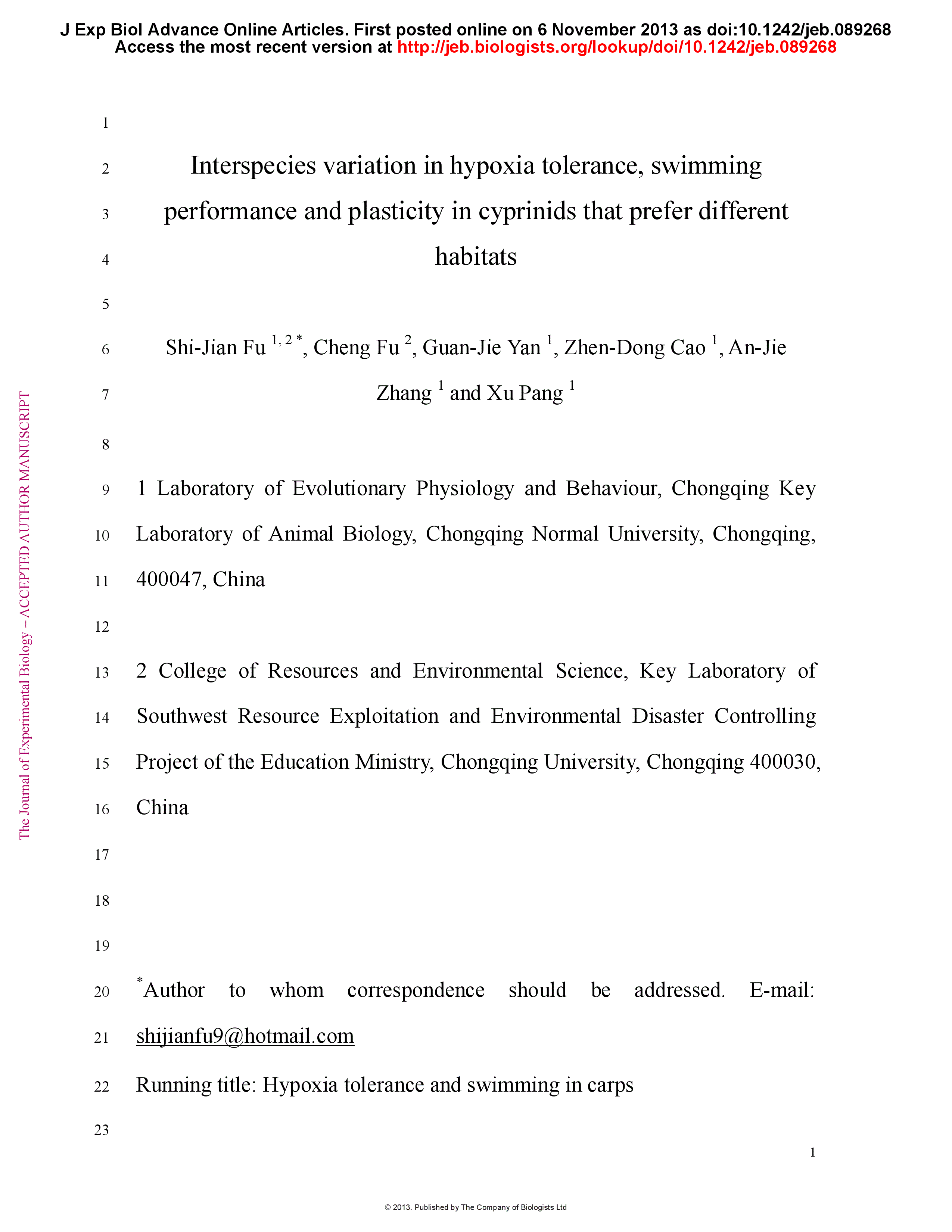Summary
This study quantified and compared hypoxia tolerance and swim performance among cyprinid fish species from rapid-flow, slow-flow and intermediate-flow habitats (4 species per habitat) in China. In addition, we explored effects of short-term acclimation on swim performance, maximum metabolic rate (Mo2 max) and gill remodelling to detect habitat-associated patterns of plastic response to hypoxia. Indices of hypoxia tolerance included oxygen threshold for loss of equilibrium (LOE50) and aquatic surface respiration (ASR50) and critical oxygen tension for routine metabolic rate (Pcrit). Critical swimming speed (Ucrit) and Mo2 max were measured under normoxic and hypoxic conditions after 48 hours acclimation to normoxia and hypoxia, and gill remodelling was estimated after 48 hours of hypoxia exposure. Both traditional ANCOVA and phylogenetically independent contrast (PDANOVA) analyses showed that fish species from rapid-flow habitat exhibited lower LOE50 compared to fish from intermediate and slow-flow habitats. Habitat-specific difference in Pcrit and Ucrit were detected using PDANOVA but not traditional ANCOVA analyses, with fish species from rapid-flow habitat exhibited lower Pcrit but higher Ucrit compared to fish from intermediate and slow-flow habitats. Fish species from rapid-flow habitats were also characterized by less plasticity in swim performance and gill morphology in response to hypoxia acclimation compared to species from slow-flow habitats, but a greater drop in swim performance in response to acute hypoxia exposure. The study detected a habitat-specific difference in hypoxia tolerance, swimming performance and its plasticity among fish from habitats with different flow conditions possibly due to the long-term adaptation to the habitat caused by selection stress. The phylogenetically independent contrasts were more powerful than traditional statistical analyses according to the habitat effects in both hypoxia tolerance and swimming performance in this study.








